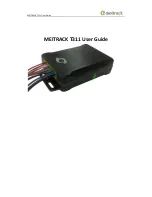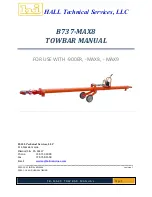
3
and configured periodic reboots. In addition, there is an option to report a Stop event
following a reboot of a non-moving device to address some customer needs to ensure that
the corner case of a reboot occurring at the end of a trip doesn’t result in an error in trip or
idle reporting by the server.
If the device is equipped with a backup battery, then it will also report Power
Disconnected and Power Connected events when primary power is removed and restored.
2) Moving State
A device enters Moving state either due to detection of a hardwired Ignition signal, an
increase in the supply voltage, detection of movement by the GPS, or an “Absolute G”
detection. While in Moving state, the device reports periodically as configured. Both
primary Moving interval reports with full data, and “minor intervals” (with only latitude,
longitude, speed, and time) for data compression can be reported while in Moving state.
3) Sleeping State
A device enters Sleeping state from Stopped state when all of vibration, GPS movement, and
primary voltage are quiescent for a sufficient duration. The qualifying duration of
quiescence, and the degree of sleep encountered, are controlled by parameters in the
Settings file.
4) Heartbeat Reporting
5.RF Exposure Information and Statement
The device reports a Heartbeat message at an interval specified regardless of state. If the
device is sleeping when the Heartbeat timer expires, it will wake up and generate the
Heartbeat message. Whether the device attempts a GPS fix for each Heartbeat message can
be specified.
This equipment complies with FCC and IC radiation exposure limits set forth for an
uncontrolled environment. This equipment should be installed and operated with minimum
distance of 20 cm between the radiator and your body. This transmitter must not be co-
located or operating in conjunction with any other antenna or transmitter.
This device complies with part 15 of the FCC rules and RSS-247 of Industry Canada.
Operation is subject to the following two conditions: (1) this device may not cause harmful
interference, and (2) this device must accept any interference received, including
interference that may cause undesired operation.





















